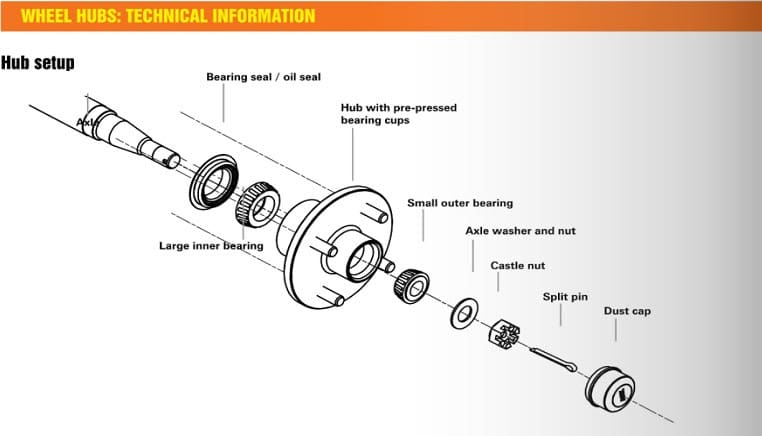Trailer Maintenance Information/Bearings

The number ONE reason for boat trailer nightmares is Bearing Failure.
9 handy tips on how to avoid bearing failure
- Get your bearings serviced regularly – at least once per 6 months, and definitely before a major trip. Even if your trailer is not being used, condensation of air occurs in the bearing cavity and can cause rust to commence. Deterioration can happen quickly and often results in problems occurring at the worst possible time.
- Check the grease levels yourself, either by removing the cap or bearing buddy, or looking through the clear caps. Milky grease is a sign that it has been compromised by water. Repack the bearing with grease if required, but never overfill the cavity or bearing buddy.
- Try and avoid submerging your bearings (and trailer) too deep in the water if you can help it. Most trailer designs nowadays support the launch and retrieval of your boat without deep submerging of the trailer. On a single-axle trailer, aim for somewhere between the axle and top of the guards; and with tandems, do not submerge below the front axle line. How deep you go is also governed by how steep or shallow the ramp is.
- Ensure your bearings have a cap, cover, or bearing buddy. Covers can and do fall off; however, they should be replaced immediately. So not submerge the bearings of the trailer in the water, without a bearing cover of sorts. You’re only inviting water in, and major problems down the line. All our trailers are supplied with high-quality bearing buddies or covers.
- Wait for the bearings to cool off before submerging the trailer in water. After a long trip to the ramp, your bearings & grease will have heated up – but once the bearings are submerged, the cool temperature will cause the grease to contract and ‘suck in’ water into the bearing cavity.
- Feel your hubs for excess heat when traveling. They should not feel any hotter than a cup of coffee. If they are ‘overheating’ then if prepared, attend to them yourself, or head to the nearest garage/ workshop for some assistance.
- Use the correct grease with your bearings; this should be high-temperature marine grease, ideally lithium based, which will not degrade with water.
- Carry a spare set of bearings with you; and better still a spare hub with bearings in it – to make any changeover very easy. Also, ensure that you have the correct bearings and that these are well-seated in the hub.
- Use double-lip marine grease seals for better protection against water ingress.